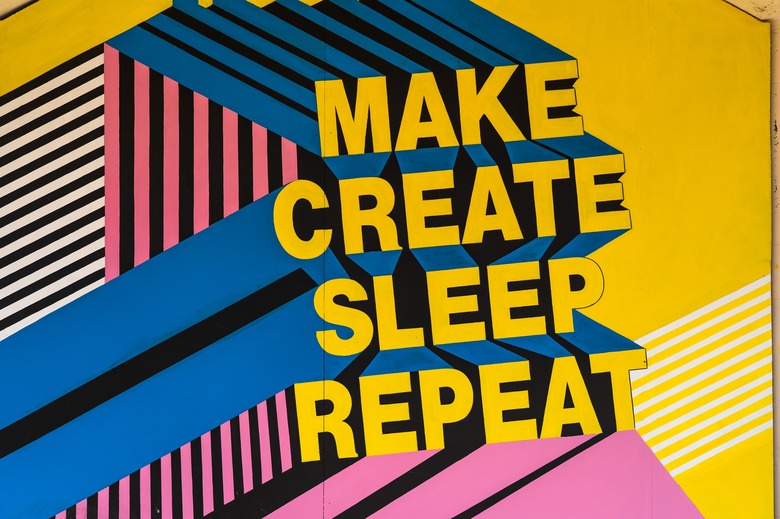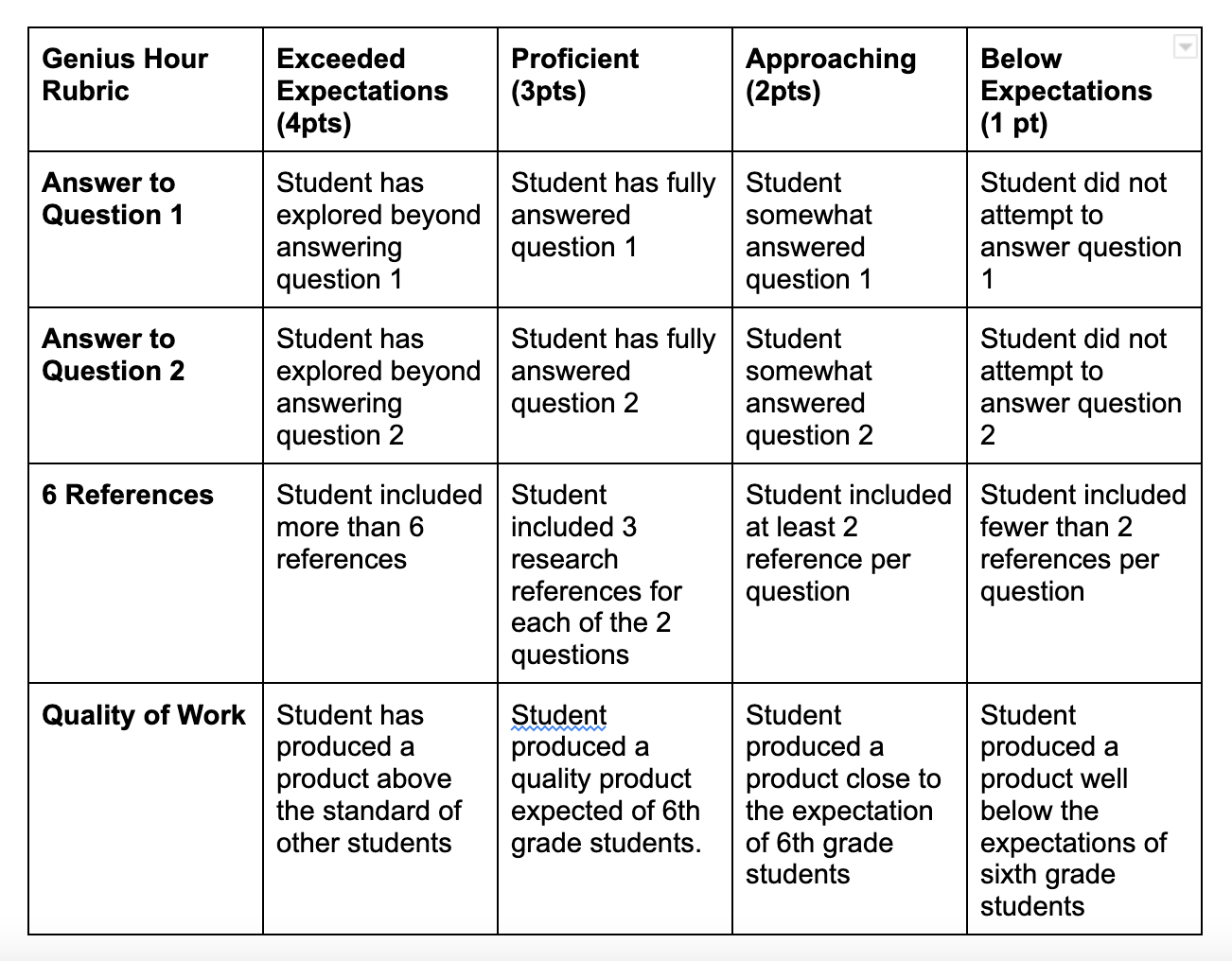Getting Started with Genius Hour

Overview
Have you ever wanted to give your students a chance to follow their passions? If you have, Genius Hour might be the answer that you have been looking for. This lesson will help you guide your students as they begin work in Genius Hour.
Photo by Nick Fewings on Unsplash
Lesson Plan
Getting Started
| Name: Amy Mella | Short Bio: I’m in my 5th year of teaching. I teach 6th grade math in an elementary school and run a STEAM Club after school. |
| Grade Level/Subject: 6th grade/Math |
Inquiry
| ISTE standard(s) for students covered in this unit: Empowered LearnerStudents leverage technology to take an active role in choosing,achieving and demonstrating competency in their learninggoals, informed by the learning sciences. Students:a.articulate and set personal learning goals, develop strategiesleveraging technology to achieve them and reflect on thelearning process itself to improve learning outcomes.b.build networks and customize their learning environmentsin ways that support the learning process.c.use technology to seek feedback that informs and improvestheir practice and to demonstrate their learning in a varietyof ways.d.understand the fundamental concepts of technologyoperations, demonstrate the ability to choose, use andtroubleshoot current technologies and are able to transfertheir knowledge to explore emerging technologies. |
Create a mini-lesson plan for how you will introduce inquiry and select their Genius Hour question.Introduction: We have been learning about space. What are some things that you would like to learn more about? (Jupiter, Comets, Black Holes) The class will then vote on which topic we explore together.Whole Class Winning Topic: Black Holes
|
| If you were doing your own Genius Hour project… What would your Genius Hour question be?Question: How can teachers help students develop number sense? |
Research
Create your mini-lesson plan on how you intend to teach research and what databases and other resources your students will use. Be sure to include how you will hold students accountable for research during this time.Introduction: We wanted to research black holes. Even though this is a subtopic, there are so many things to learn about black holes. This is why we came up with our 3 most important questions. Today, we are going to use those questions to guide our research.Teacher Led
|
| How will you be checking in on your student’s progress? What will your daily/weekly exit ticket/stand-up meeting ask of your students?I will check in weekly. It will be most important to bring the student’s focus back to their questions. What are they doing to answer those questions? They will bring their outline with their cited sources. I will ask them what they need from me to help them get to where they want to be. |
Implementation and Presentations
Make a rubric specifically for your student’s Genius Hour project. |
| ISTE Standard for Educator 7a is “Provide alternative ways for students to demonstrate competency and reflect on their learning using technology”. How could you incorporate this into Genius Hour?Students will be able to present orally, write a reflection, or create a video presentation to share their growth. |
Community Sharing
| Describe how your students will share their Genius Hour projects. Be sure to take your school/district’s social media and privacy guidelines into account.Students will have a Genius Hour Showcase. This will be the final week of school and the 5th Grade will be invited. Students will also email their projects to their parents. Projects may also be uploaded to the classroom website. |
| How could you meet ISTE Standard for Educators Collaborator 4c “Use collaborative tools to expand students’ authentic, real-world learning experiences by engaging virtually with experts, teams, and students, locally and globally” with Genius Hour?Many experts can be found online. There are many lectures and Ted Talks (previously viewed) that can be used. I would also love to bring in presenters virtually or in-person, if I can find them for the the topics my students have chosen. |
Reflection
| Now that you have completed this course, how do you plan to structure Genius Hour in your class? This will be done in my after-hours STEM Club. I will teach the mini lessons and let the students move through and experience failure and success. I will have the outline supports to guide students and I will have weekly check-ins with each student to help them navigate their research and to make sure that they are answering the questions that they have. |
| What are your next steps? Which of those steps will come easiest? Where will the terrain become rocky? What can you do now to navigate the road ahead with the most success?The easiest will be to get the students excited and started. It will become rocky as they have to do the research to answer their questions. Check-ins will be vital to help them succeed. |
| How will you allow students to reflect on their Genius Hour experience? Students will make a video explaining to the 5th graders the successes and difficulties they experienced with Genius Hour. Hopefully this will spark some curiosity in the 5th grade class right before they become 6th graders. |